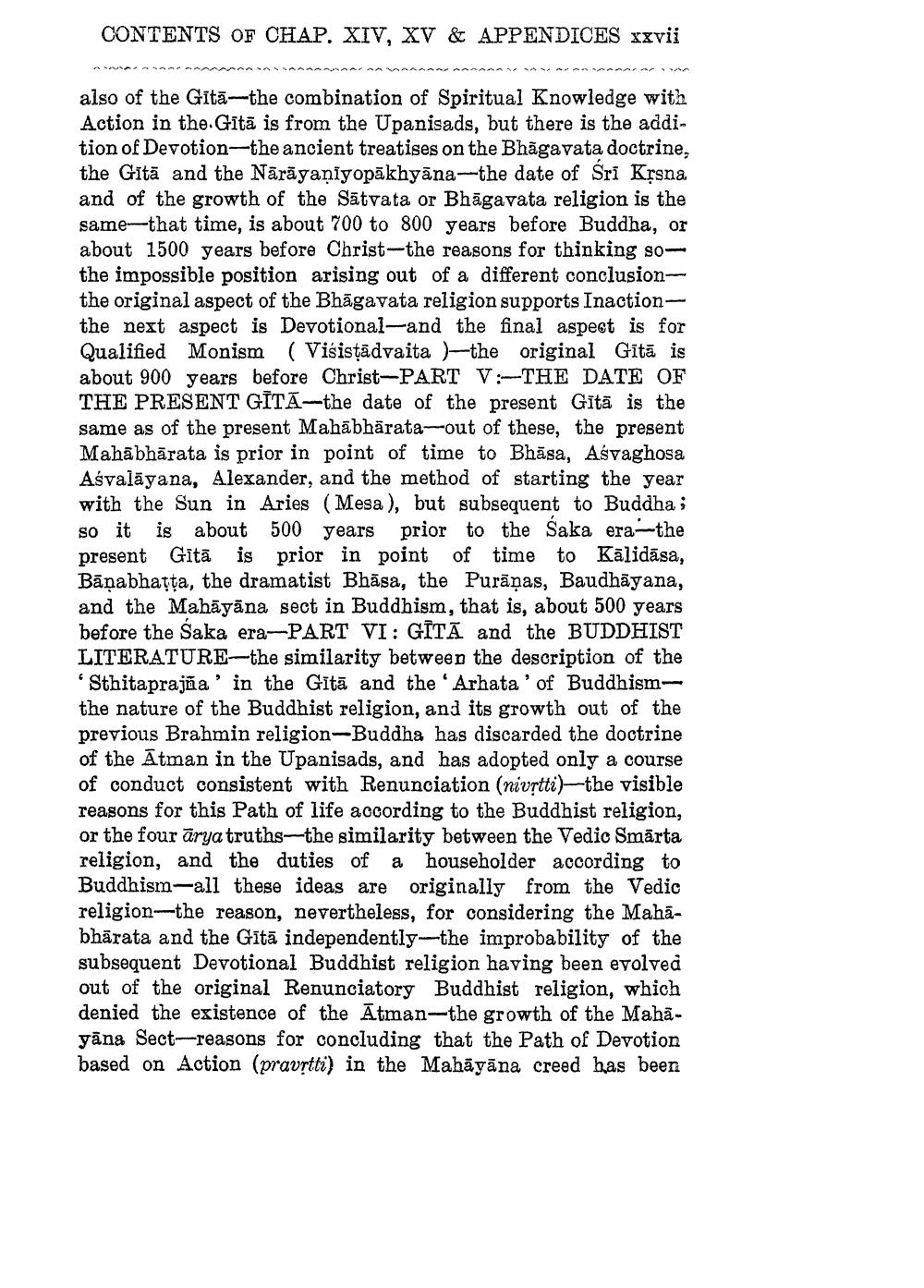________________
CONTENTS OF CHAP. XIV, XV & APPENDICES xxvii
also of the Gītā-the combination of Spiritual Knowledge with Action in the Gītā is from the Upanisads, but there is the addition of Devotion-the ancient treatises on the Bhāgavata doctrine, the Gitā and the Nārāyaniyopākhyāna-the date of Sri Krsna and of the growth of the Sātvata or Bhāgavata religion is the same--that time, is about 700 to 800 years before Buddha, or about 1500 years before Christ-the reasons for thinking som the impossible position arising out of a different conclusion the original aspect of the Bhāgavata religion supports Inactionthe next aspect is Devotional-and the final aspect is for Qualified Monism (Visistādvaita )-the original Gītā is about 900 years before Christ-PART V:-THE DATE OF THE PRESENT GĪTĀ--the date of the present Gītā is the same as of the present Mahābhārata-out of these, the present Mahābhārata is prior in point of time to Bhāsa, Ašvaghosa Asvalāyana, Alexander, and the method of starting the year with the Sun in Aries (Mesa), but subsequent to Buddha ; so it is about 500 years prior to the Saka era--the present Gītā is prior in point of time to Kālidāsa, Bānabhatta, the dramatist Bhāsa, the Purānas, Baudhāyana, and the Mahāyāna sect in Buddhism, that is, about 500 years before the Saka era-PART VI: GĪTĀ. and the BUDDHIST LITERATUREthe similarity between the description of the
Sthitaprajña' in the Gītā and the 'Arhata' of Buddhism the nature of the Buddhist religion, and its growth out of the previous Brahmin religion-Buddha has discarded the doctrine of the Ātman in the Upanisads, and has adopted only a course of conduct consistent with Renunciation (nivýtti)-the visible reasons for this path of life according to the Buddhist religion, or the four ārya truths--the similarity between the Vedic Smārta religion, and the duties of a householder according to Buddhism-all these ideas are originally from the Vedic religion-the reason, nevertheless, for considering the Mahabhārata and the Gītā independently-the improbability of the subsequent Devotional Buddhist religion having been evolved out of the original Renunciatory Buddhist religion, which denied the existence of the Atman--the growth of the Mahayāna Sect-reasons for concluding that the Path of Devotion based on Action (pravrtti) in the Mahāyāna creed has been




